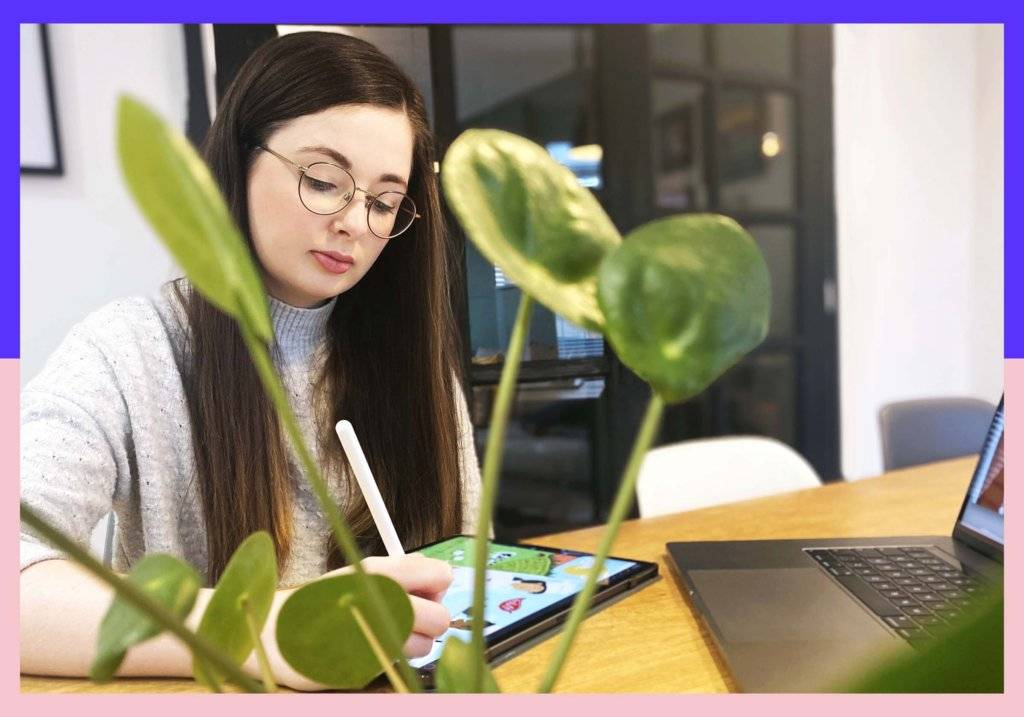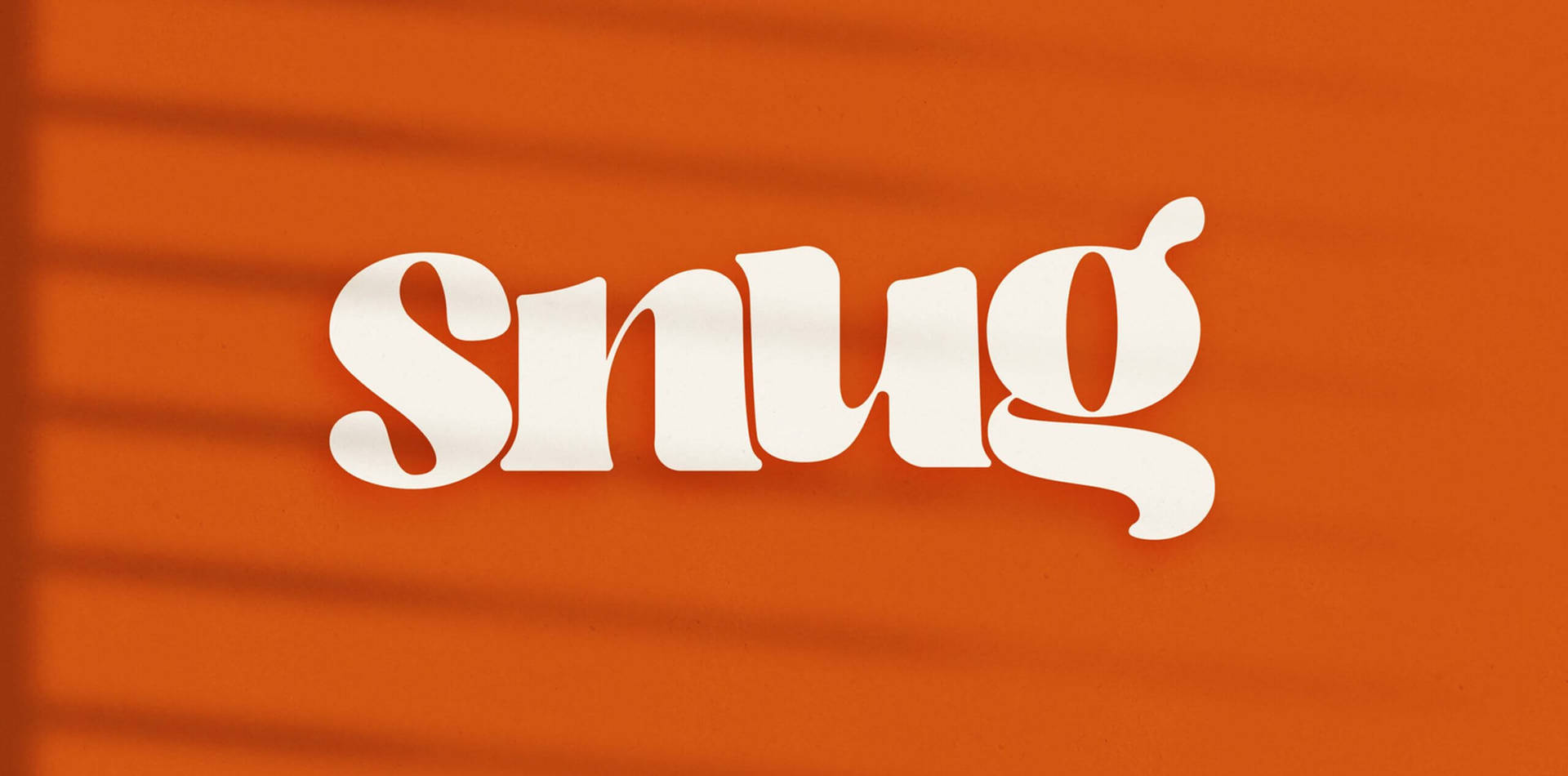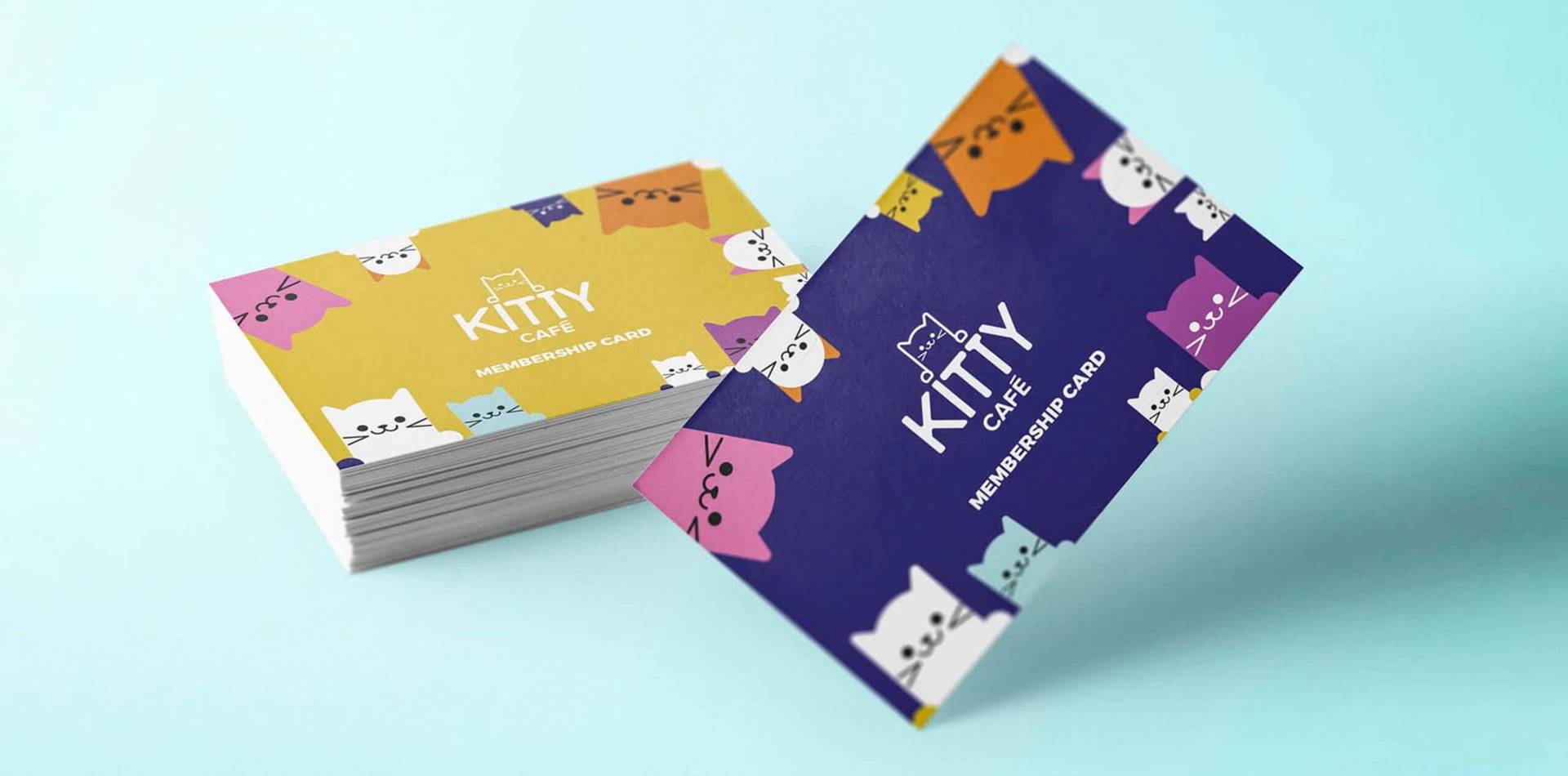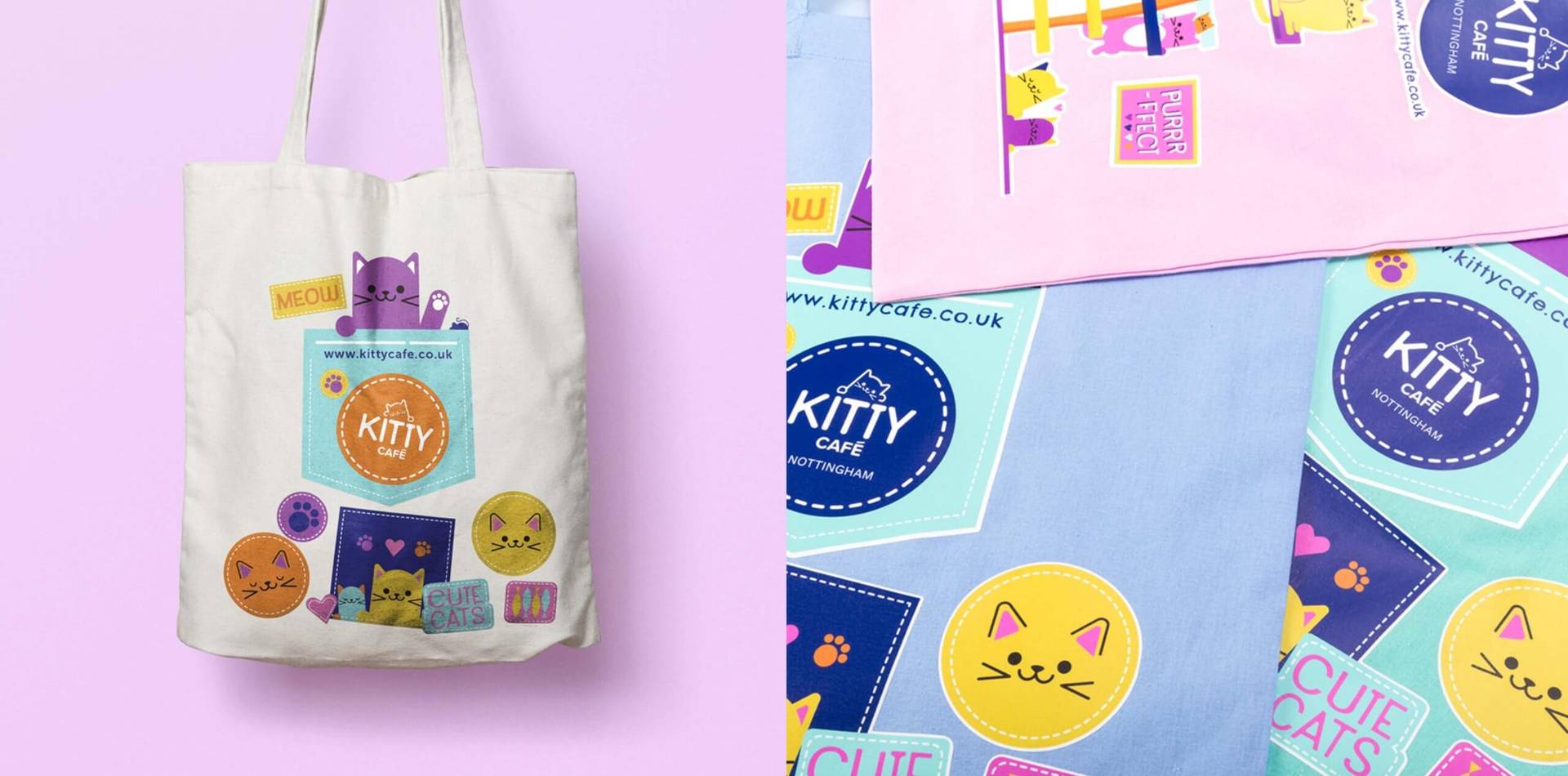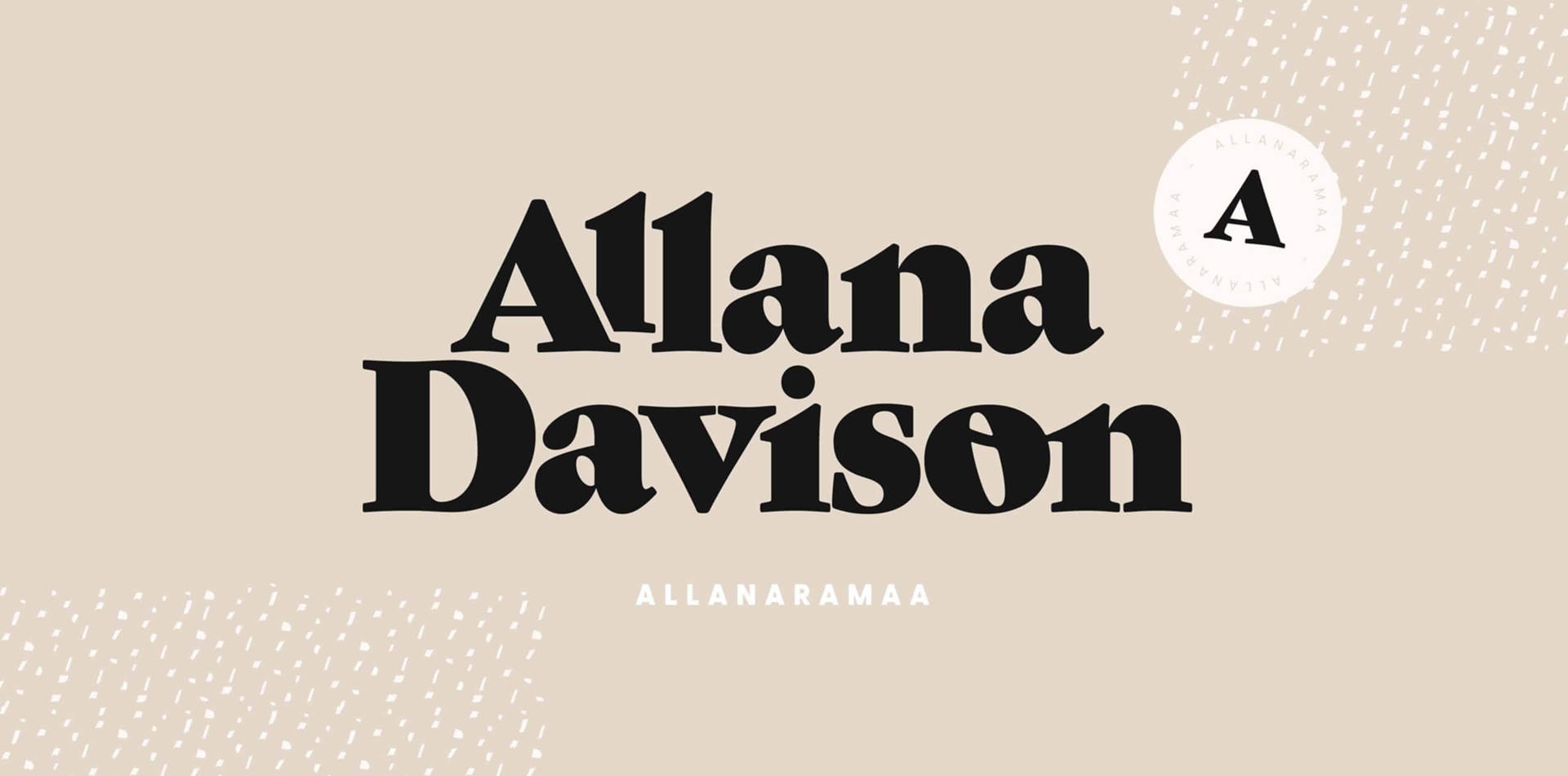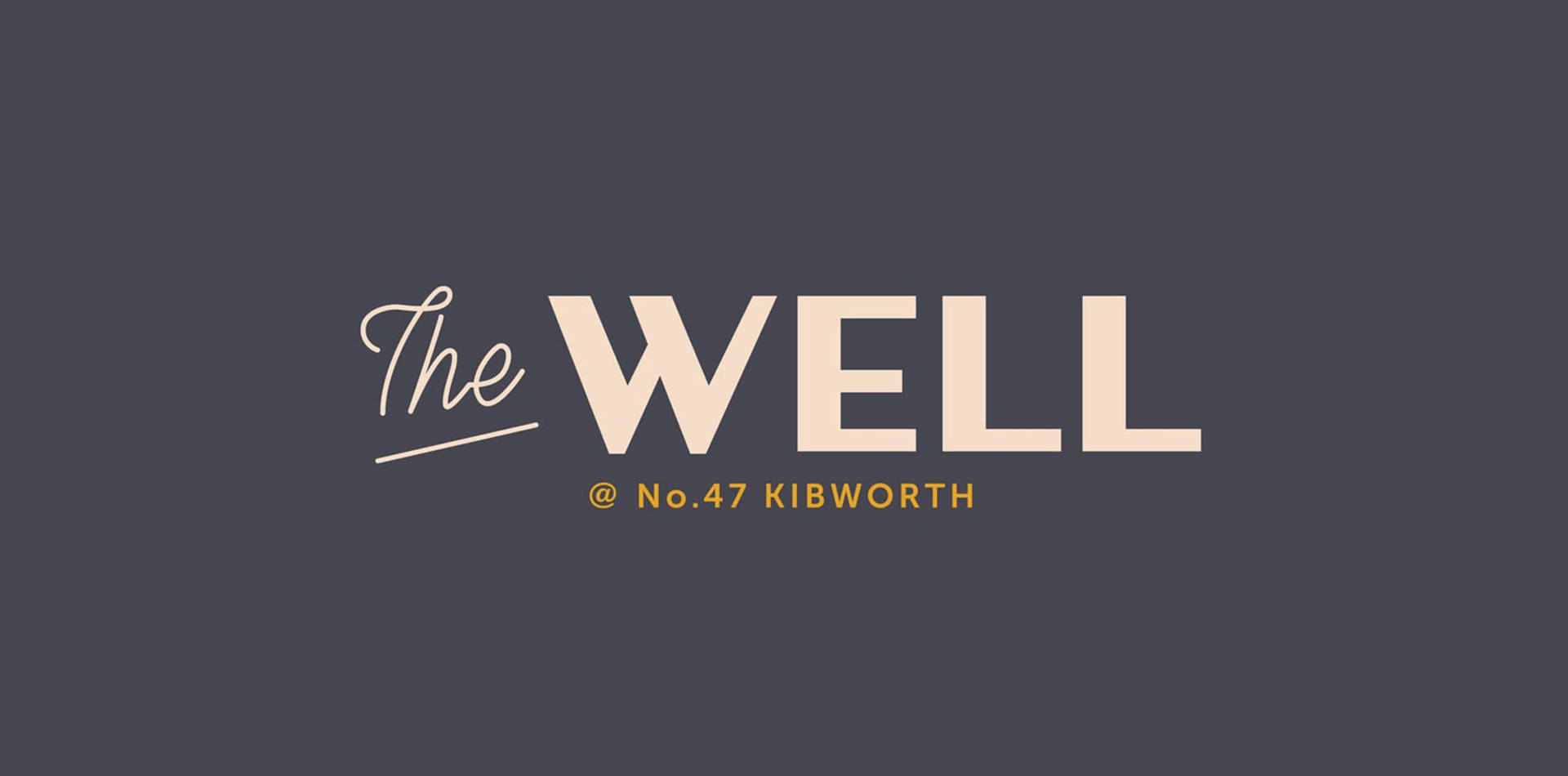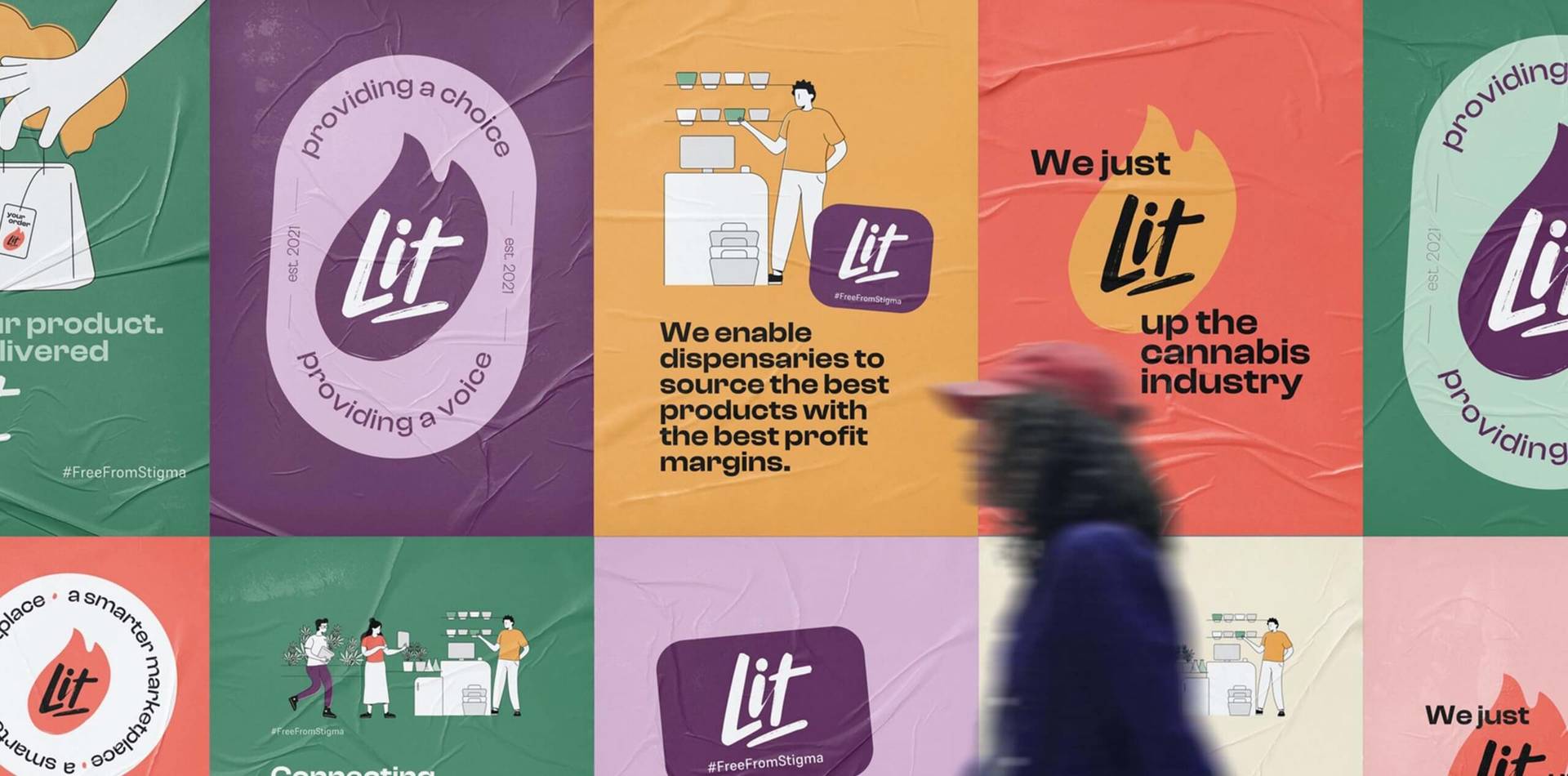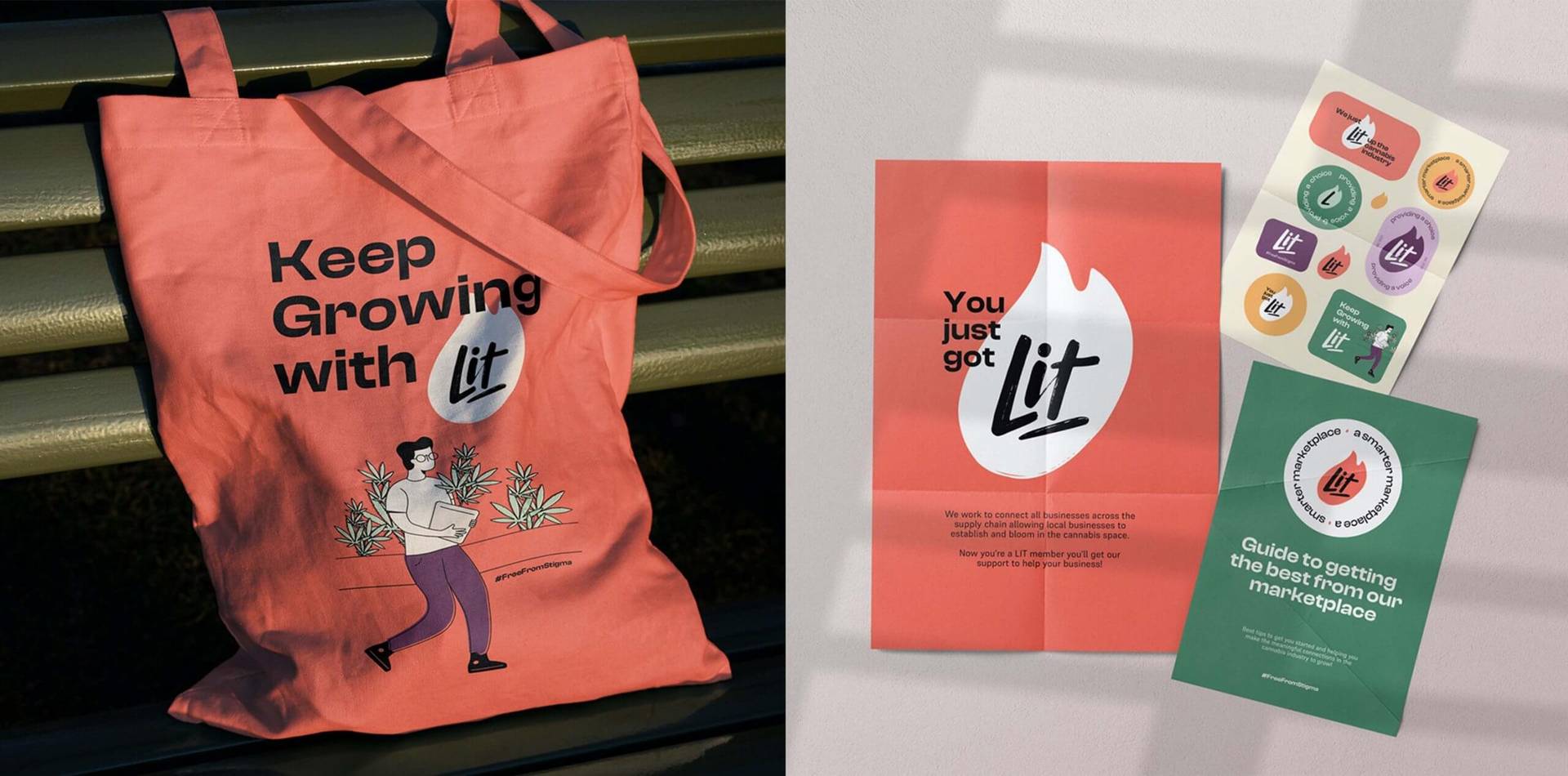Jess Bright is a multi-skilled graphic designer, based in Nottingham, UK, specialising in illustration, branding, murals, and lettering. Since starting out in her freelance career, Jess has often incorporated multiple aspects of her creative toolkit into client projects. Her portfolio is filled with well-considered brand identities that have an illustrative element and/or beautifully crafted lettering or type. A lover of bright colour, bold type and pattern, incorporating these elements in projects where she can, forms a key part of Jess’ creative approach.
She started working as a graphic designer straight out of college and after a few years enrolled on the degree course at Nottingham Trent University, where she had the opportunity to fine-tune her skills, build a stronger portfolio and understand where she wanted to go in her career. After graduating, Jess worked in various in-house roles before taking the plunge into full-time freelance life. She believes it’s important to keep learning new skills, something which has been an important part of her development as a professional designer.
Jess doesn’t believe being a woman has negatively impacted her career, but having worked in various male dominated office environments she has experienced sexism. As she tells us: “It would be things like assuming the only woman in the room would be taking the minutes to share with everyone later; men repeating comments made by a woman and only then being accepted as a good idea — all the small things that sound like cliches, but they really do happen all the time.” Having now worked both in-house and as a freelancer, she’s realised how being an independent designer has allowed her to work with more women-led businesses and clients: “I have noticed that I’m working with more women putting themselves at the top (with their own businesses) and lifting other women up too, which is great to see.”
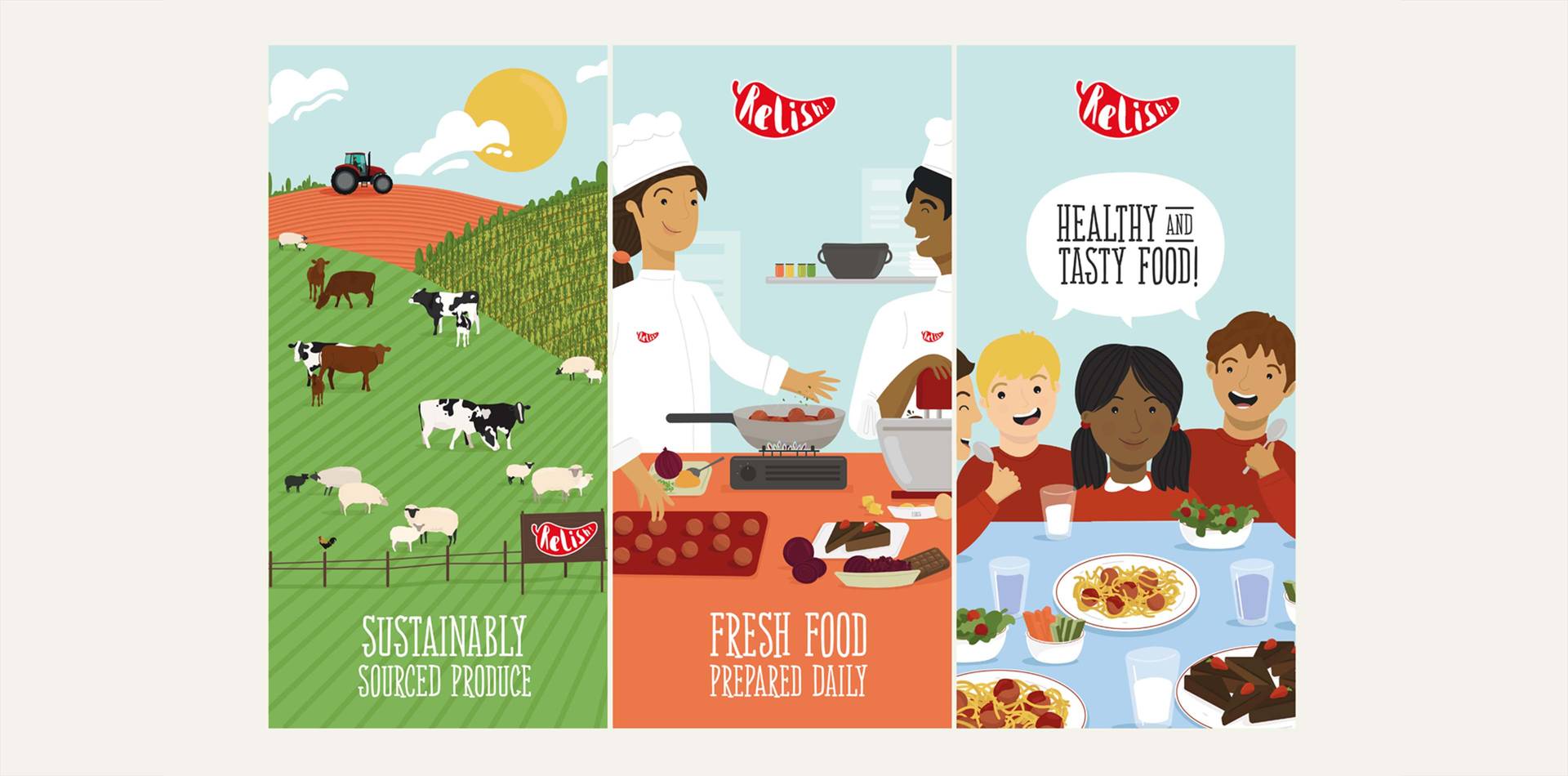
We caught up with Jess to find out more about her career path, where she finds inspiration, dealing with imposter syndrome and some words of advice for people just starting out in the industry.
When did you first become interested in working as a designer and illustrator?
I always had an interest in art and design throughout school and seeing my mum’s night class ceramic work was really inspiring to me growing up. It grew from there, and eventually I came to the realisation that I could build a career from design; something that was never promoted as a viable career option throughout school.
Can you tell us a bit about your career path and how you got to where you are now in your career?
I started out working as a graphic designer after college part-time, as well as some small freelance work mainly for friends of family. When I applied first time straight after college, I didn’t get a place at uni and it felt like I wasn’t going to be able to have the career I wanted. However, this experience did give me a chance to work on my own things, develop my software skills and create a portfolio ready to apply again.
Looking back, I do wonder if I could have not gone to uni at all, but so many jobs were labelled as needing a degree, it made it feel like there was no choice. I applied again and got offered a place to study for a degree at Nottingham Trent University, which allowed me to build my design skills and develop my portfolio further.
After graduating I found myself doing mostly production design work. Luckily, I wasn’t stuck making web banners for too long and moved on to a job in an architectural practice, which was more focused on typography, layout and illustration. It was here that I started incorporating illustration as a part of wider branding projects, which is what I still focus on today as a fully-fledged freelancer.
How have you developed your visual style throughout your career and have there been any pivotal moments?
I think my style has primarily been moulded though practice and by experimenting with different tools and software. I used to exclusively use Adobe Illustrator for all my work, but since picking up the iPad Pro I’ve enjoyed drawing in a more relaxed way, which has made me feel far less precious about completing a slick, ‘finished’ piece in one fell swoop.
I also continuously make sure that I’m still learning new stuff. I’ve signed up to and completed various online courses to gain more knowledge and develop skills in areas I want to improve in, such as, lettering courses by Lauren Hom and Charly Clements’ classes on Skillshare.
Where do you get your inspiration from and how do you approach a new project?
I collect things that I like as well as just looking at everyday objects and products. There’s lots of nice stuff even in the most mundane of places, like the supermarket; some of the packaging, pattern and print work you see there is amazing.
Sometimes when starting a client project, they provide me with a mood board of inspiration to use as a reference. This can be very useful. But I think it’s also important to find out what it is they like about the inspiration they’ve selected. Then I can use different elements, such as a colour or feeling, to create something unique and right for them, without just replicating what’s already there.
How would you describe yourself as a designer and your design style?
Honestly, I would describe myself as a bit of a mixed bag. I love to work with bold type, colour and pattern, using a simplified playful style, in both my illustration and branding projects. I like to use my skills to mix illustration elements within client projects when I can, whilst also being mindful of the brief requirements.
How has being a woman impacted your career?
I don’t think being a woman has negatively impacted my career overall. I’ve always worked in male dominated offices, which I don’t personally mind as most people will listen and take your ideas on board and I did feel like I was heard (most of the time).
However, there were many examples of everyday sexism in office life. It would be things like assuming the only woman in the room would be taking the minutes to share with everyone later; men repeating comments made by a woman and only then being accepted as a good idea — all the small things that sound like cliches, but they really do happen all the time
Since going freelance (and maybe because more people are starting out on their own), I’ve been involved with more women-led teams. That’s definitely a positive change and I hope I can be involved in more of those in the future.
Have you experienced the gender pay gap or how few women progress into senor positions in the design industry and do you have any thoughts on how we can counteract this imbalance?
I have noticed it personally and I’ve also read about the lack of women in senior positions. I don’t know why there aren’t the same opportunities for women in full time work , but I’m hopeful it will get better when current leaders step down and move out of our way! I have noticed that I’m working with more women putting themselves at the top (with their own businesses) and lifting other women up too, which is great to see.
One positive change that we can all make would be to normalise the discussion around money and the attitude towards the value of design in general. The only people that benefit from staff not speaking up about their salaries is the business itself. It’s the only way we can ensure we’re all on the same level and earning equal pay for doing the same job.
What have your experiences of imposter imposter syndrome and self-doubt been like and how do you deal with it?
I have suffered from it and still do. When I was younger, I looked up to people who were 10 years+ into their careers, when I was still just at the beginning. Looking back now, I’ve realised I shouldn’t have compared my work to theirs as we weren’t at the same stage in our careers. It’s easier to deal with now because I know clients are approaching me directly after coming across my work, so I remind myself that people are seeing something good in me! I think you must remember that you can’t compare yourself to someone who isn’t in the same place as you; and ultimately don’t compare yourself to anyone at all – just do your own thing.
If you could go back to the beginning and start your career again what would tell your younger self?
That everything will work itself out. Just do the work, don’t be afraid to put it out there and have less fear. Create the work you want to!
Do you have any words of advice for women considering a career in the design industry today?
If you’re into it then do it! There’s lots of different paths you can take and it’s okay to not know what you want to do at the start. I started with graphic design, then added illustration to my skills. Now I do murals and some hand lettering too!
Where do you see yourself in 5 years’ time?
I’d love to know for sure, but I hope that I’m still designing and illustrating as a freelance creative. I’m also looking at creating some homeware and prints that I could sell too. As long as I can make a decent living doing what I want to do, then I’ll be happy.
Which women creatives have most inspired you?
I’m a Lauren Hom fangirl for sure. Love her work and how much knowledge she openly shares. Also, I’m a big fan of Pandr Design Co. (Roxy Prima & Phoebe Cornog) as they both share so much information and where they are in their business. Jessica Hische too, for many of the same reasons. All are transparent about pricing and contracts and things people don’t normally like to share.
Name 3 other female creatives currently working in the industry who you find inspiring:
- Kate Pullen: www.katepullendraws.com/
- Alice Lee: www.byalicelee.com/
- Lisa Maltby: www.lisamaltby.com/
